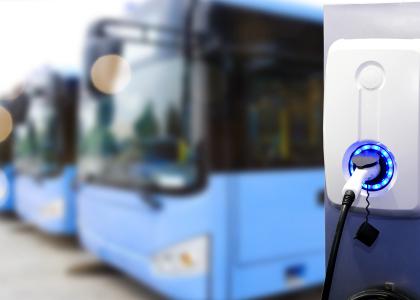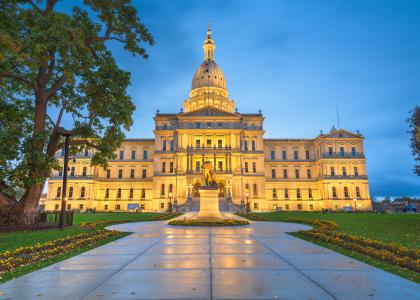California’s official push toward a carbon-free electricity system, now awaiting the governor’s signature, will need dramatic contributions from energy efficiency to succeed.
Last week, lawmakers passed SB 100, mandating that power generation come solely from clean sources like wind and solar by 2045. In the interim, the bill increases the state’s Renewables Portfolio Standard (RPS) requirements in 2024, 2027, and 2030, to 60% by 2030. If signed, California would follow the lead of Hawaii and many US cities in moving towards 100% clean energy-based power.
Some utilities and regulators have questioned whether there’s still a role for energy efficiency in a future where renewable energy and storage costs continue to plummet and where clean energy provides 100% of electricity. The answer is a resounding yes — in fact, energy efficiency is crucial to ensuring the transition to a 100% clean energy future is effective, low cost, and equitable.
Efficiency is affordable and abundant
Energy efficiency remains the cheapest and largest zero-emissions resource, and efforts to reach a low carbon future without it will be more expensive and less likely to succeed. Recent research by Berkeley Lab (corroborated by similar work here at ACEEE) finds that efficiency is still the lowest cost resource that utilities can procure for their customers, costing an average of 2.5c/kWh across the US and 3.1c/kWh in California. These average program costs have stayed steady in recent years and are lower than utility-scale wind and solar on a levelized, unsubsidized basis. Efficiency also delivers valuable co-benefits that support a clean energy economy: making homes comfortable and healthy, creating productive workplaces, and boosting grid reliability.
Energy efficiency is also a big resource. It’s already the third largest in the US power sector, and is especially robust in California, a leader in saving energy for four decades. Nonetheless, it remains an enormous opportunity for the state. In 2015, California enacted SB 350, which committed to doubling statewide cumulative energy efficiency savings by 2030 relative to 2015. A recent California Energy Commission (CEC) study found that current programs could save more energy if they pursued more aggressive pathways, leaving additional savings available to meet these ambitious goals.
Not only is efficiency abundant and inexpensive, it’s also necessary to meet the broader US goal to cut emissions 80% by 2050. In a 2017 report released by the Natural Resources Defense Council, energy efficiency made the largest contribution to mitigating emissions (including reductions in vehicle miles traveled in the transportation sector) — larger than renewables, and almost as much as renewables and end-use electrification combined.
Efficiency boosts grid flexibility
Integrating renewables into the grid may lower system costs, to a point. But doing so can become increasingly expensive and technically difficult when renewables account for nearly 100% of the power supply. One way to address this challenge is shifting electric loads to the times of day when renewables are available or lower cost, and away from when they’re not.
Energy efficiency supports the demand-side flexibility needed to effectively shift loads. Berkeley Lab’s research finds that some, but not all, efficiency technologies generate more savings during peak times when grid costs are highest. In Arizona, Arizona Public Service’s 2018 DSM plan suggests that some efficiency measures are less valuable midday, an off-peak time when solar is abundant. The utility used this argument to reduce funding for HVAC and new construction programs.
Although it’s important to consider the time-value of energy efficiency in grid and resource planning, APS’ strategy is misguided. Though energy efficiency can be costly during times of abundant renewables, it still has benefits that outweigh those costs when considered across the whole year. A recent Strategen analysis of customer savings in Arizona finds lower customer bills for each of the efficiency measures in APS’ portfolio, even taking into account the value of efficiency at different times and projected growth in solar.
Rather than reduce efficiency efforts to integrate renewables, we should simply build on existing programs. Targeting investment in efficiency technologies that save at peak times can certainly benefit the system and customers. Locational or time-based incentives, or marketing campaigns that build on existing programs, can support using energy efficiency to shift loads. And efficiency technologies can more directly help shift energy demand and avoid ‘throwing away’ renewable resources through curtailment. With the right controls, efficient heat-pump water heaters, smart thermostats, or electric vehicles can turn off or reduce their draw on the system since they may not need electricity from the grid at the moment they are used.
In addition, off-peak or broad-based efficiency such as building envelope improvements help integrate renewables. They ensure flexible technologies like load-controlled air conditioners are effective and not wasted through leaky buildings. Finally, even off-peak energy efficiency can reduce grid demands and, over time, needed investments in transmission and distribution infrastructure — one of the largest benefits of energy efficiency.
Efficiency makes clean energy available and affordable for all
Recent California legislation, including SB 350, focuses on the impacts of fossil fuel extraction on disadvantaged communities, ensuring they will receive some of the benefits of clean energy development. Renewables can lower system costs, but many people, especially renters, cannot directly benefit from them. They may lack the funds or credit to invest in these technologies, or live in multifamily housing, remote or underserved communities.
In contrast, energy efficiency can benefit everyone, regardless of income or location. It can also directly improve the health and comfort of homes and buildings. While significant barriers remain to deliver efficiency to all Californians, promising models are emerging. The Solar on Multifamily Affordable Housing Program supports solar and efficiency in multifamily housing, requiring an energy audit to identify the most promising opportunities. Combined solar and efficiency models offer a clear path forward for delivering clean energy to all.
As California implements this bold new legislation, it should build on its rich history of energy efficiency in utility programs, building codes, and resource planning to ensure the success of its 100% clean energy future.





